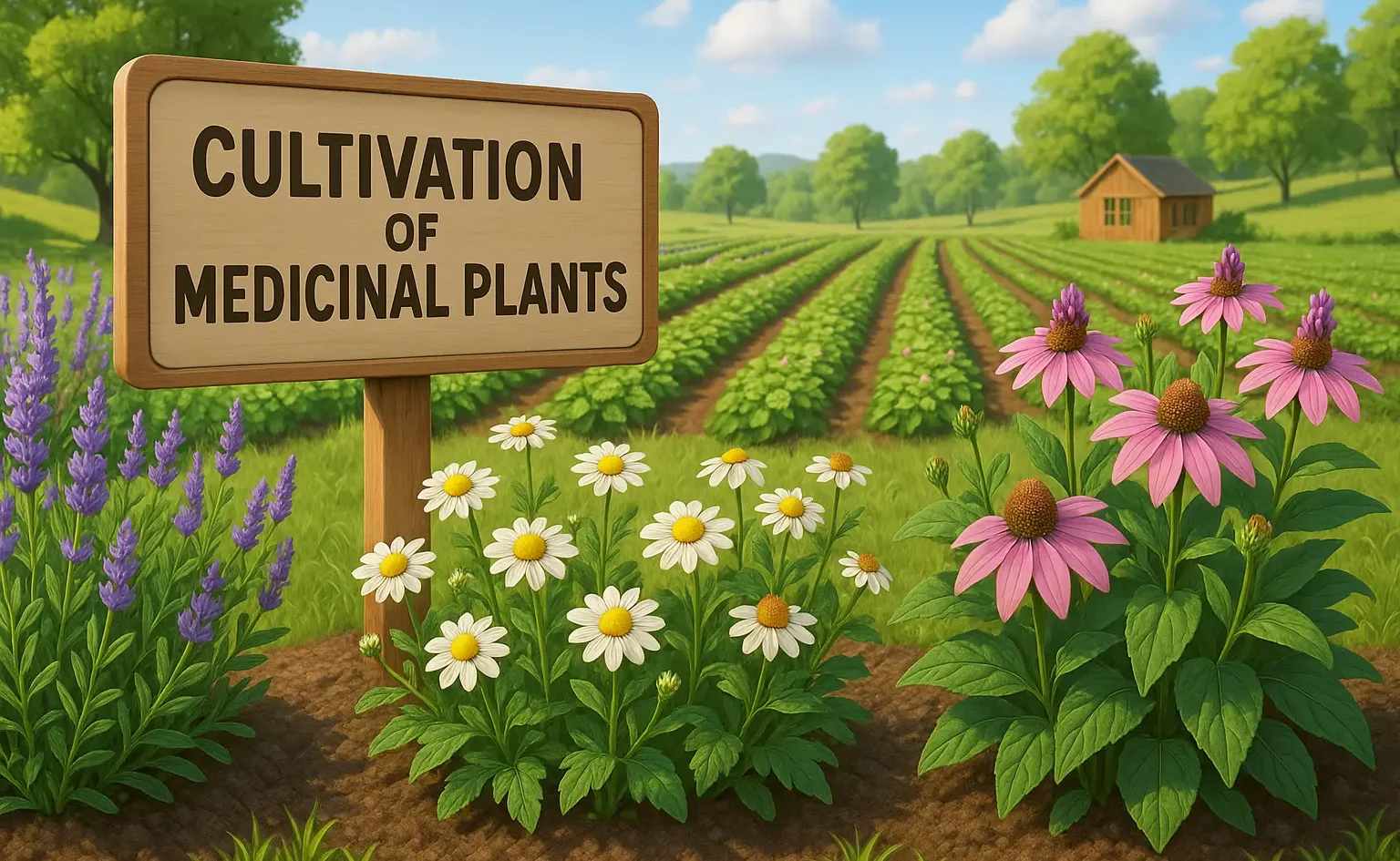- Cultivation of Medicinal Plants involves controlled growth to ensure quality, yield, and purity of herbal drugs.
- Cultivation of Medicinal Plants supports sustainable supply, consistency, and preservation of therapeutic plant species.
- Cultivation is the scientific and controlled growth of medicinal plants to obtain high-quality drugs in a sustainable manner.
Importance of Cultivation
- Prevents overexploitation of wild medicinal plants.
- Ensures high yield and consistent quality.
- Protects endangered species from extinction.
- Helps in standardization of plant-derived medicines.
- Provides economic benefits to farmers and herbal industries.
Methods of Cultivation

-
Sexual Propagation (Seed Propagation)
- Involves growing plants from seeds.
- Seeds develop through fertilization and genetic recombination.
- Examples:
- Ocimum sanctum (Tulsi) – Grown from seeds for essential oil production.
- Papaver somniferum (Opium poppy) – Cultivated for alkaloid content.
- Advantages:
- Genetic diversity enhances adaptability and disease resistance.
- Cost-effective and easy for large-scale farming.
- Seeds can be stored for future use.
- Disadvantages:
- Slow growth and longer germination time.
- Some plants have low seed viability.
- Genetic variations may lead to inconsistent medicinal properties.
-
Asexual Propagation (Vegetative Propagation)
- Involves growing new plants from vegetative parts like roots, stems, or leaves.
- Produces genetically identical plants (clones).
- Asexual Propagation Methods
- Cutting
- Growing plants from stem, root, or leaf cuttings.
- Example: Mentha species (Mint) – Propagated from stem cuttings.
- Layering
- A branch is bent and covered with soil until roots develop.
- Example: Vanilla planifolia (Vanilla) – Air layering method.
- Grafting & Budding
- Joining two plant parts to combine desired traits.
- Example: Citrus species (Lemon, Orange) – Used for medicinal essential oils.
- Rhizomes & Tubers
- Underground stems or tubers grow into new plants.
- Example: Curcuma longa (Turmeric) – Propagated from rhizomes.
- Tissue Culture (Micropropagation)
- Growing plants from small tissue samples in sterile lab conditions.
- Example: Rauwolfia serpentina (Sarpagandha) – Used for large-scale production.
- Cutting
- Advantages:
- Faster growth and early maturity.
- Ensures uniform medicinal properties.
- Allows multiplication of rare or endangered species.
- Disadvantages:
- No genetic diversity, making plants vulnerable to diseases.
- Some methods (grafting, tissue culture) require technical expertise.
- Higher cost than seed propagation.
Advertisements
Advantages of Cultivation of Medicinal Plants
- Ensures sustainable supply and prevents overexploitation.
- Higher yield and better control over quality.
- Disease-resistant varieties can be developed.
- Prevents adulteration commonly found in wild-collected plants.
- Economic benefits for farmers and herbal industries.
Disadvantages of Cultivation of Medicinal Plants
- High initial investment in land, irrigation, and processing.
- Slow growth for certain plants (Ginseng, Sarpagandha).
- Pests and diseases may require regular management.
- Environmental impact if monoculture reduces biodiversity

